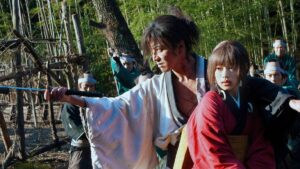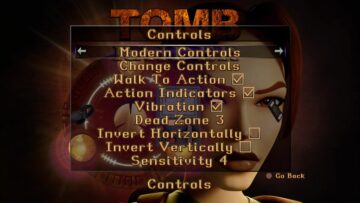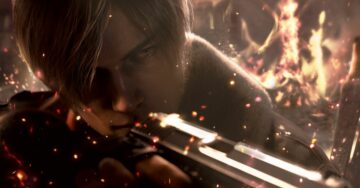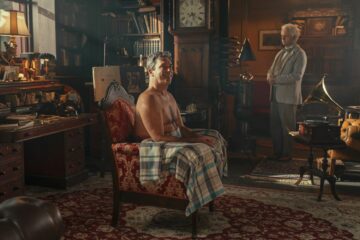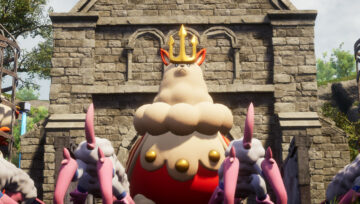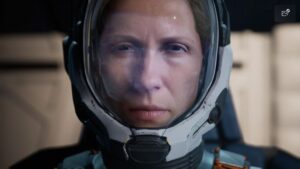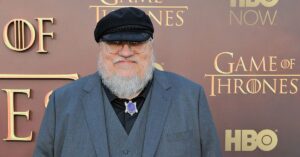Peter Jackson’s eight-hour Disney Plus docuseries The Beatles: Get Back, an extended behind-the-scenes accounting of the recording of Let It Be, features one particular scene that foreshadows The Beatles’ dissolution. It’s January 1969, and the group is desperately trying to flesh out their new song “Two of Us.” They’re under immense pressure. For this project, they’ve tasked themselves with writing and arranging 14 new songs to be recorded live, for a studio audience, in two weeks’ time. Cameras are there to capture their effort. They also capture John Lennon and Paul McCartney ganging up on poor George Harrison, squeezing out any sonic space for his guitar. Harrison quits the band, throwing the future of the inchoate album into jeopardy.
The Beatles — Lennon, McCartney, Harrison, and Ringo Starr — originally hoped the aptly titled project Get Back would return the band to its roots. They would leave behind overdubs or studio tracks, rolling back the ways of working in the studio that produced their most acclaimed albums, in lieu of a bare approach. Those recording sessions have long been known as a miserable time for the band.
But Jackson has explored 60 hours worth of 16mm film footage shot by filmmaker Michael Lindsay-Hogg, and 150 hours worth of audio, to reveal a different reality. While vexation and exasperation color every other minute, so does joy, laughter, and camaraderie. Unfortunately, these nuggets, which recontextualize Beatles lore, aren’t easy for Jackson to translate.
Get Back opens with a grating, haphazardly produced montage of The Beatles’ hits, mixed with clips of their career touchstones — their fated meeting, the beginning of the raucous Beatlemania, their debut on The Ed Sullivan Show, the backlash against Lennon’s “bigger than Jesus” quote. Jackson’s brief, tacked-on rundown of the band’s early career represents the lone olive branch he will offer casual or newer Beatles fans. The rest of the docuseries’ eight hours are dedicated to the hardcore — the kind of viewers who can spot every splice of a studio outtake, every non-album track, and all the songs the group covered throughout their time together.
Get Back chronicles the meetings that led to the weakest studio effort of the band’s late-career peak, Let It Be. Jackson reveals the band’s dynamics, introducing the main players and the sharks circling the waters, leading to The Beatles’ demise. He concludes with a testament to their genius: the 1969 rooftop gig that was their final concert as an official band. But Jackson’s Get Back is a grueling endurance test, prone to repetition. Its fleeting rhapsodies of song creation spontaneously overflow with magic, but it still wasn’t designed to win any new converts to The Beatles’ music.
The series’ first segment is the most shapeless. It’s a tedious 157 minutes that’s best left playing in the background while shuffling around the house. Here, The Beatles spend much of their time noodling around on their instruments, playing a myriad of covers, like “Johnny B. Goode,” “Quinn the Eskimo,” “I Shall be Released,” and so forth. But what’s initially beguiling about Get Back is its unlikely setting. Rather than choosing a posh recording studio, or at least something closer to Abbey Road, the Beatles opted for the drab, drafty movie soundstage of Twickenham Studios. The band temporarily received the space, reserved for filming the dark comedy The Magic Christian (starring Peter Sellers and Ringo Starr), from movie producer Denis O’Dell.
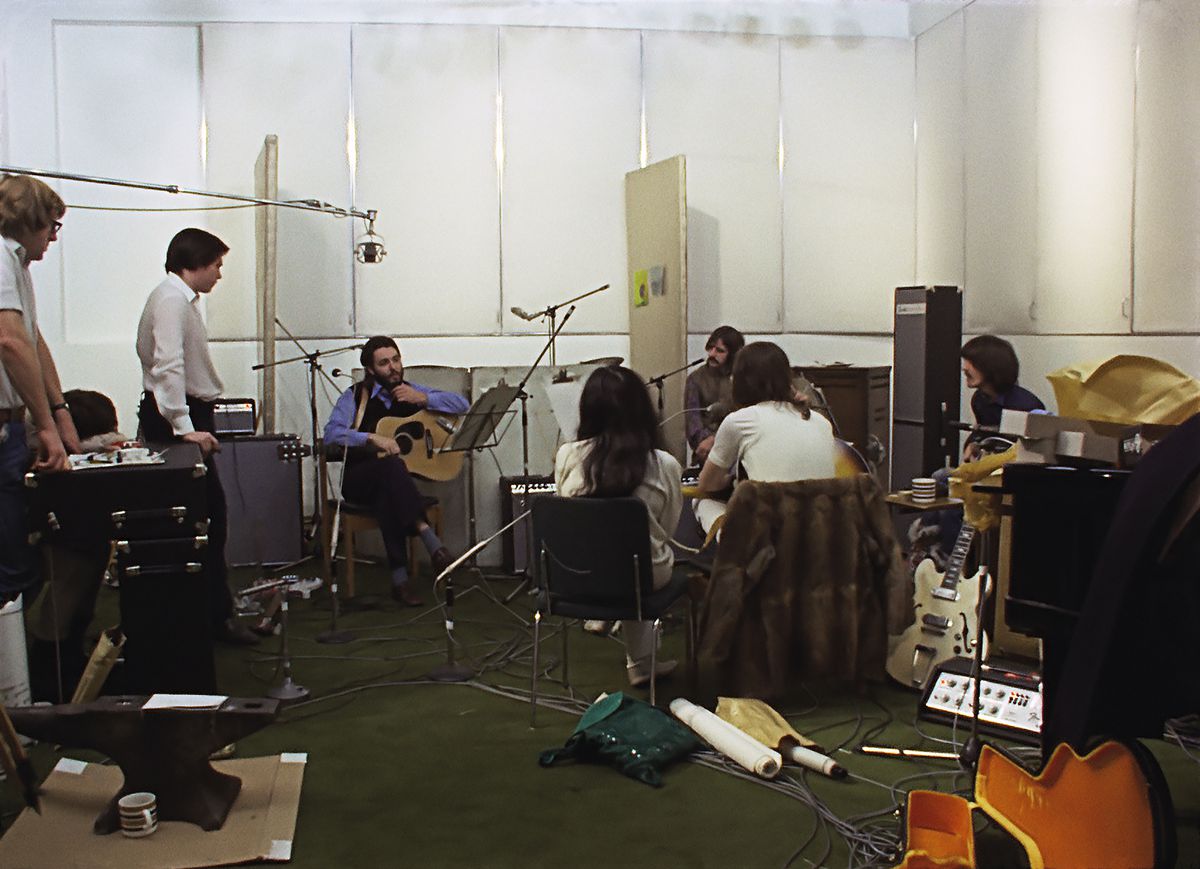
It’s almost comical to see the biggest band in the world rendered so small: Their simple setup barely takes up a corner of the studio, they don’t have any recording equipment, and the acoustics of the space are dreadful. They rummage around their incomplete melodies, first with jocularity, then with frustration.
Though the band meanders, the specter of time limitations hangs over the proceedings. Not only hasn’t the band written and arranged their songs yet, they haven’t even settled on a location for filming their television special. (They kick around the Sabratha Amphitheater in Libya as an option). Like to the group, Jackson is hesitant to push the action. The director abandons any hint of a discerning eye. Instead, he splays out every minute detail from their time at Twickenham, debilitatingly edited by Jabez Olssen (The Hobbit trilogy). It all plays out in almost real time, without any regard for watchability.
Too often, Jackson relies on the sights and sounds of song creation to keep audience investment. It’s thrilling when half-finished familiar tracks arrive, like “I’ve Got a Feeling,” “Two of Us,” and “Get Back,” which McCartney presents to Harrison and Starr on bass. These songs are on the edge of something recognizable, but not yet the polished versions that are so at home in listeners’ ears. Hearing tracks such as “Maxwell’s Silver Hammer,” which would later appear on Abbey Road, or songs that would eventually turn up in the band members’ solo material, offers the same kind of delight. But the excitement of hearing classic tracks in their infancy wanes when “I’ve Got a Feeling” is played ad nauseam. For everyone but the most ardent Beatles scholars, the methodical, wearisome process of crafting songs is simply boring.
The best pockets of the first episode, apart from the songcraft, arrive whenever the band’s fragile dynamics are tested or illuminated. George Martin, The Beatles’ longtime producer — who was always the grown-up in the room, but was sidelined in favor of Glyn Johns during this process — accurately describes what’s plaguing the group: Lennon and McCartney are always a team, while Harrison is usually alone. Jackson doesn’t use this fraught reality as a throughline. It just bobs on the surface, like a life preserver drifting away from a sinking man.
Get Back gains greater traction in its second three-hour segment. The band leaves Twickenham Studios for the safe confines of their London headquarters. The all-around affable keyboarder extraordinaire Billy Preston hops on the sessions, rounding out the group’s spare sound. Their wives appear: Yoko Ono, Linda McCartney, Pattie Harrison, and Maureen Starkey. The group becomes buoyant with renewed energy. Even as the pressures of the press reporting on their every disagreement and their competing business interests begin to cause fissures, the playful footage suggests that the mythology of the band being aggrieved during these sessions is overstated.
Get Back often operates best as a love story. Lennon and McCartney once lived inside each other’s pockets, but they’ve drifted apart. Both hope this project will mend the wound festering between them, by returning them to their songwriting roots. Their near-telepathic communication, the enjoyment they find in each other’s silliness — Lennon’s manic sense of humor is on full display here — and their ability to be vulnerable, open and honest, displayed in a secretly taped conversation between them about Harrison’s rightful displeasure, gives the second part a fully felt heart as warm as any of the band’s earworm melodies.
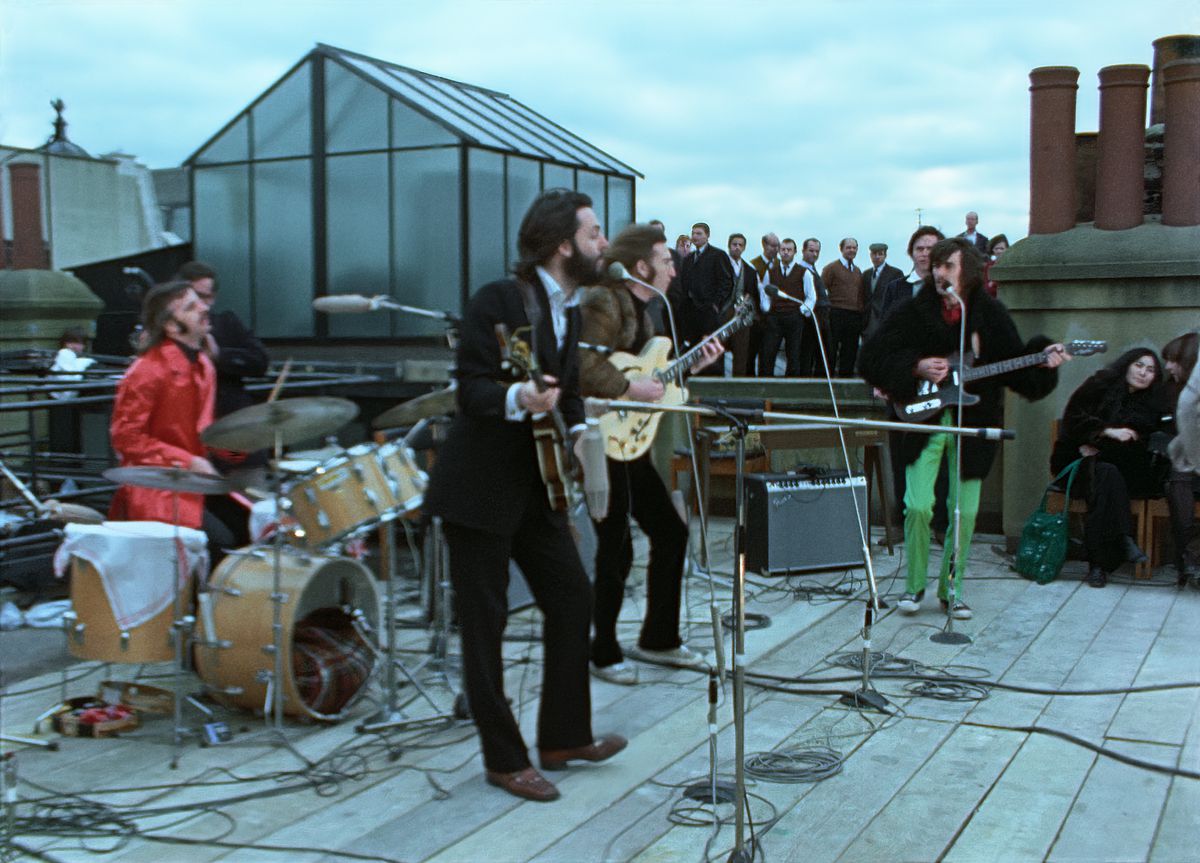
The third section of Get Back is the strongest of the trio, by virtue of including the entirety of the famed rooftop gig. This portion also crystalizes some other factors in the band’s later breakup: how hard Lennon fell for music publishing conman Allen Klein, and McCartney’s desire for the band to push the band creatively, without a roadmap or plans for a destination. And the crisp beauty of this restoration gets its best display in the rooftop performance, a marked improvement over the 1970 documentary Let It Be. A gorgeous array of diptych and triptych collages assemble images of the confused but excited street-level audience, the urban neighboring rooftops filled with giddy spectators, and the enlivened band.
Unlike in the previous parts, every detail here feels necessary and immense, fun and revelatory. A man on the street interviews the listeners, spanning from all walks of life. Unamused cops and cynical businessmen wanting to shutter the show become the easy villains. The four lads and Preston are the clear heroes. Their soulful, final breaths in public together, the debuting of unheard songs on a city rooftop, an audacious move so shocking it’s never really been repeated with the same gusto, are a clarion call revealing everything that made them special, and showcasing the artistic pleasures that still delight to this day.
This eight-hour docuseries, a mishmash of half-started compositions and mind-numbing noodling on instruments, desperately needs a discerning eye to cut away the fat. Jackson isn’t up to the task. Rather than a robust five-hour cut the director delivers an unyielding, difficult-to-watch marathon. In fact, watching it recalls a John Milton phrase from Paradise Lost: Fit audience find, though few. For everyone but the most extreme Beatles fanatics, Jackson’s Get Back lacks urgency and storytelling, and is too besotted with merely watching the group, in all their mundanity. For the group’s most dedicated scholars, though, Jackson’s Get Back is a fitting, expansive interrogation and celebration of their waning days.
All eight hours of The Beatles: Get Back are now streaming on Disney Plus.
Source: https://www.polygon.com/reviews/22803457/the-beatles-get-back-review-documentary
- Accounting
- Action
- Ad
- albums
- All
- around
- audience
- audio
- Beatles
- Beauty
- BEST
- Biggest
- business
- call
- cameras
- Career
- Cause
- City
- closer
- Comedy
- Communication
- content
- Conversation
- cops
- CRISP
- day
- detail
- Director
- Disney
- disney plus
- documentary
- Early
- Edge
- Endurance
- energy
- equipment
- eye
- Features
- Film
- Filming
- First
- full
- fun
- future
- George
- Group
- Gusto
- here
- Home
- hops
- House
- How
- HTTPS
- Humor
- improvement
- Including
- Interviews
- investment
- IT
- leading
- Led
- location
- London
- Long
- love
- man
- meetings
- mixed
- move
- movie
- Music
- Mythology
- offer
- Offers
- official
- open
- opens
- Option
- Other
- performance
- players
- Playing
- Plus
- poor
- press
- pressure
- Process
- Produced
- producer
- project
- public
- Publishing
- Reality
- REST
- road
- safe
- Sellers
- sense
- Series
- setting
- Silver
- Simple
- small
- So
- Space
- spend
- Spot
- storytelling
- streaming
- street
- Surface
- television
- test
- The
- the world
- time
- track
- urban
- us
- viewers
- Vulnerable
- WHO
- win
- world
- worth
- writing
- youtube
